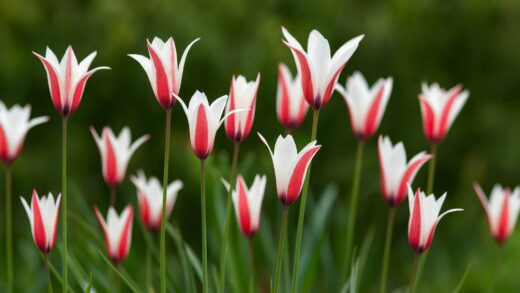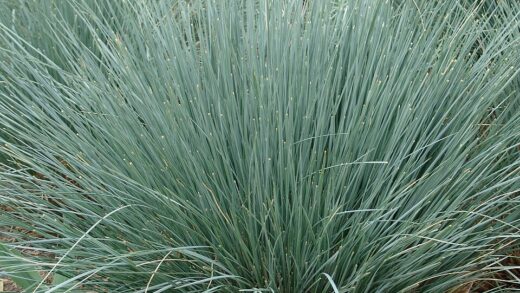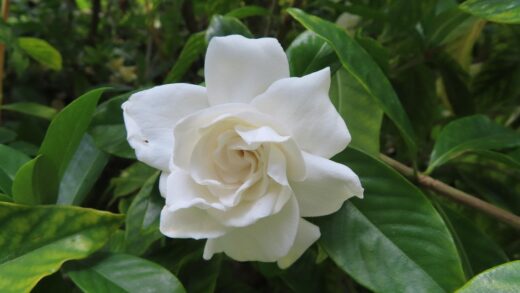Understanding the specific water requirements of Arum maculatum is fundamental to its successful cultivation, as its irrigation needs are closely tied to its distinct annual life cycle of active growth and summer dormancy. This woodland native thrives in conditions that mimic the moist, humus-rich floor of a deciduous forest, where soil moisture levels fluctuate naturally with the seasons. Providing the right amount of water at the right time is crucial; too little during its spring growth phase can stunt its development, while too much during its summer dormancy can lead to fatal tuber rot. Therefore, a thoughtful and responsive watering strategy is far more effective than a rigid, routine schedule, ensuring the plant remains healthy and vigorous throughout the year.
The plant’s demand for water is at its peak during the spring. This is the period when it emerges from dormancy, rapidly unfurling its large, arrow-shaped leaves and producing its unique inflorescence. All of this energetic growth requires a consistent and reliable supply of moisture from the soil. In its natural habitat, this is provided by spring rains and melting snow, which keep the forest floor consistently damp. In a garden setting, it is the gardener’s responsibility to replicate these conditions, particularly during dry spells, to prevent the soil from drying out and stressing the plant.
Conversely, as summer approaches, the plant’s life cycle dictates a dramatic shift in its water needs. After flowering and setting seed, the foliage begins to yellow and wither, and the plant enters a state of dormancy. During this resting period, its metabolic activity slows down significantly, and its requirement for water is drastically reduced. The underground tuber is susceptible to fungal diseases and rot if the soil remains excessively wet during this time. Therefore, irrigation must be tapered off and reduced significantly to allow the soil to dry out more between waterings.
It is also important to consider the role of soil composition in water management. Arum maculatum demands a well-draining soil rich in organic matter. This type of soil acts like a sponge, retaining necessary moisture for the plant’s roots while allowing excess water to drain away freely. Heavy clay soils that hold onto water for extended periods are unsuitable without significant amendment, as they create the anaerobic, waterlogged conditions that are so detrimental to the plant’s tuberous root system. The interplay between soil structure and watering practice is key to maintaining the delicate moisture balance this plant requires.
The importance of spring moisture
The spring season is the most critical period for moisture when caring for Arum maculatum. This is when the plant undertakes the most energy-intensive phases of its life cycle, including the emergence and expansion of its foliage and the development of its flowers. A consistent supply of water is essential to fuel this rapid growth. If the soil is allowed to dry out for extended periods during this phase, the plant’s development can be severely checked, resulting in smaller leaves, stunted growth, and a potential failure to produce its characteristic spathe and spadix.
More articles on this topic
In many temperate climates, natural spring rainfall is sufficient to meet the plant’s needs. However, during unseasonably dry springs, supplemental irrigation becomes necessary. The goal is to maintain a consistently moist soil environment, similar to that of a damp woodland floor. The soil should feel damp to the touch but should not be saturated or waterlogged. A good practice is to check the soil moisture every few days by inserting a finger into the top few centimeters; if it feels dry, it is time to provide a deep and thorough watering.
Deep watering is far more effective than frequent, shallow watering. A deep soaking encourages the plant to develop a strong, extensive root system that can access moisture from a larger volume of soil. This makes the plant more resilient to short-term dry spells. When watering, apply the water slowly and directly to the soil around the base of the plant, allowing it to percolate deep into the root zone. Avoid overhead watering, as this can leave the foliage wet, potentially encouraging the development of fungal diseases.
The period of high water demand typically lasts from the first appearance of shoots in early spring until the leaves begin to naturally yellow and die back in early to mid-summer. Throughout this window, vigilance is key. By ensuring the plant never experiences significant water stress during its active growth phase, the gardener provides the foundation for a healthy plant that can successfully flower, produce berries, and store enough energy in its tuber to ensure a robust return the following year.
Reducing water during summer dormancy
A crucial shift in watering strategy is required as Arum maculatum transitions from its active growth phase into summer dormancy. This natural transition is signaled by the yellowing and withering of the leaves, which typically occurs sometime after flowering in early summer. This is not a sign of distress but a normal part of the plant’s life cycle, indicating that it is beginning to store energy in its underground tuber for the next season. As the plant’s above-ground presence diminishes, so too does its need for water.
More articles on this topic
During dormancy, the tuber is in a resting state and is highly vulnerable to rot if the surrounding soil is kept too wet. Continued heavy watering, appropriate for the spring growth phase, can be fatal during the summer. Therefore, supplemental irrigation must be significantly reduced or stopped altogether, depending on the local climate and rainfall patterns. The objective is to allow the soil to dry out more thoroughly between periods of moisture, preventing the stagnant, waterlogged conditions that foster fungal pathogens.
For plants grown in a garden bed in a region with regular summer rainfall, it is often unnecessary to provide any additional water during their dormant period. The natural precipitation will typically be sufficient. In arid climates or during prolonged droughts, occasional watering may still be needed to prevent the tuber from completely desiccating. In such cases, a light watering every few weeks is adequate to keep a minimal level of moisture in the soil without creating overly wet conditions.
The visual cues from the plant are the best guide for when to adjust the watering schedule. Once the leaves have fully died back, leaving only the stalk of developing berries, it is a clear signal to scale back on irrigation. This careful management of water during the plant’s resting phase is just as important as providing ample moisture during its growth phase. It respects the plant’s natural rhythms and is the key to ensuring its long-term health and survival.
The role of soil drainage
While the application of water is one side of the equation, the drainage capacity of the soil is the other, equally important, component of successful water management for Arum maculatum. This plant cannot tolerate “wet feet,” meaning its roots should not be sitting in stagnant water for extended periods. Excellent drainage is non-negotiable for the health of its tuberous root system. Even with the most careful watering schedule, if the soil does not drain properly, the risk of root rot remains high.
The ideal soil for cuckoo-pint is one that can retain moisture but also allows excess water to pass through freely. This is characteristic of the humus-rich soils found on a forest floor. In the garden, this can be achieved by amending the soil before planting. For heavy clay soils, which are notoriously slow-draining, incorporating materials like coarse grit, perlite, and a generous amount of organic matter like compost or leaf mold is essential. These amendments create larger air pockets in the soil, improving its structure and allowing water to move through more easily.
Conversely, very sandy soils may drain too quickly, not holding enough moisture for the plant during its spring growth phase. In this case, the addition of organic matter is also the solution. Compost and leaf mold act like a sponge, absorbing water and releasing it slowly to the plant’s roots, thereby improving the water-holding capacity of the soil. The goal is to strike a balance, creating a medium that is both moisture-retentive and well-draining.
The location of the planting site can also influence drainage. Avoid planting Arum maculatum in low-lying areas of the garden where water tends to collect and puddle after heavy rain. Instead, choose a site with a slight slope or a raised bed to ensure that water is never standing around the base of the plant. By prioritizing soil drainage from the outset, you create a resilient growing environment that is forgiving of occasional overwatering and protective of the plant’s vulnerable tuber.
Signs of incorrect watering
The health and appearance of Arum maculatum can provide clear visual cues as to whether its water needs are being met correctly. Both overwatering and underwatering can cause distinct symptoms, and learning to recognize them allows for timely intervention. Being observant is key to diagnosing and correcting any issues with your irrigation practices before they cause irreversible damage to the plant.
Underwatering, especially during the crucial spring growing season, will manifest as wilting or drooping leaves. The foliage may also appear lackluster and may fail to reach its full potential size. In severe cases of drought stress, the edges of the leaves may turn brown and crispy. If the plant does not receive enough water during its active growth phase, it may also fail to produce a flower, as it conserves its limited resources for survival. If these symptoms are observed in spring, a deep and immediate watering is required.
Overwatering presents a more serious threat, primarily due to the risk of tuber rot. The initial signs can be confusingly similar to underwatering, including yellowing leaves and a wilting appearance. However, the key difference is that the soil will be consistently wet or soggy to the touch. The yellowing of leaves due to overwatering will often be a sickly, pale yellow, and the base of the plant may feel soft or mushy. If tuber rot has set in, the plant will likely decline rapidly and may not be salvageable.
The most reliable way to diagnose watering issues is to combine visual inspection of the plant with a physical check of the soil. Always feel the soil before you water. If the top few centimeters are still moist, hold off on watering, especially during the plant’s dormancy. If the leaves are wilting but the soil is dry, the plant is thirsty. If the leaves are yellowing and wilting while the soil is soggy, overwatering is the culprit. By learning to read these signs, you can fine-tune your watering habits to perfectly match the needs of your Arum maculatum.


















